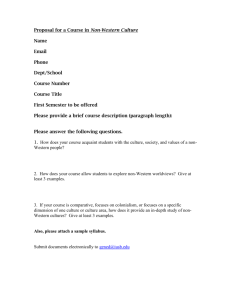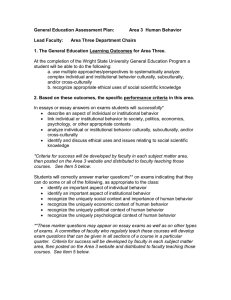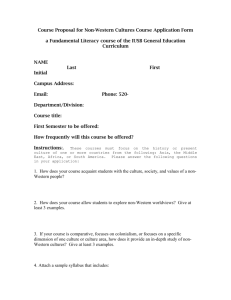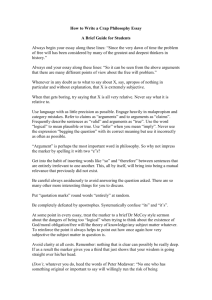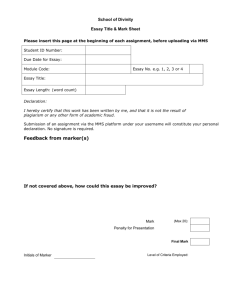Area 2 - Cultural-Social Foundations
advertisement
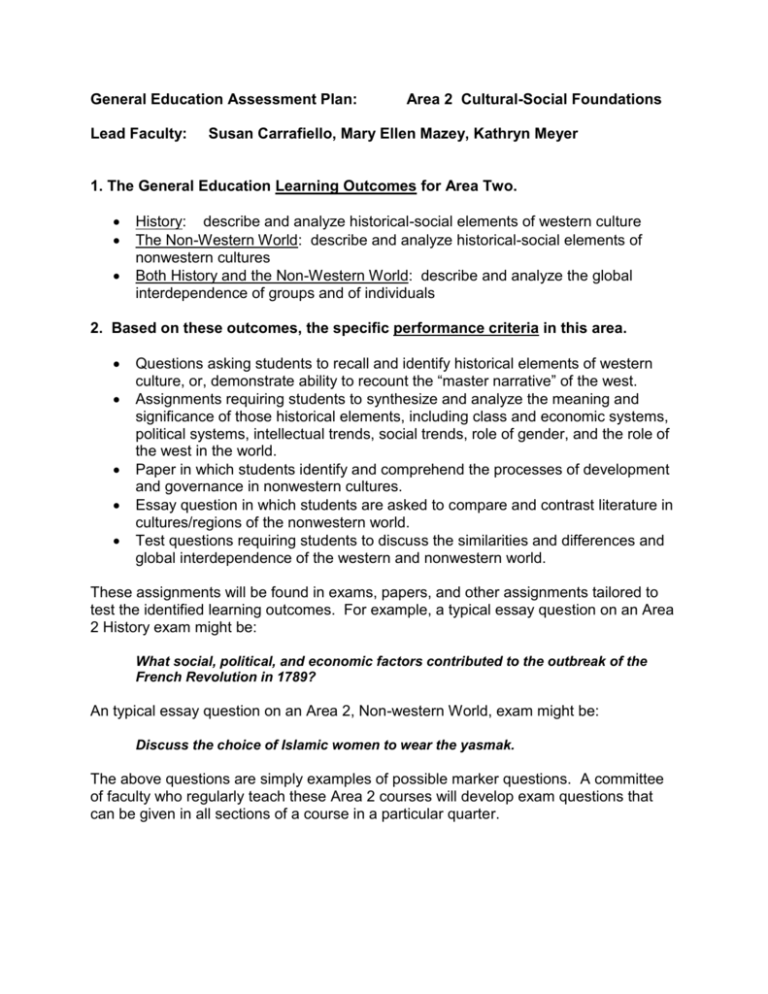
General Education Assessment Plan: Lead Faculty: Area 2 Cultural-Social Foundations Susan Carrafiello, Mary Ellen Mazey, Kathryn Meyer 1. The General Education Learning Outcomes for Area Two. History: describe and analyze historical-social elements of western culture The Non-Western World: describe and analyze historical-social elements of nonwestern cultures Both History and the Non-Western World: describe and analyze the global interdependence of groups and of individuals 2. Based on these outcomes, the specific performance criteria in this area. Questions asking students to recall and identify historical elements of western culture, or, demonstrate ability to recount the “master narrative” of the west. Assignments requiring students to synthesize and analyze the meaning and significance of those historical elements, including class and economic systems, political systems, intellectual trends, social trends, role of gender, and the role of the west in the world. Paper in which students identify and comprehend the processes of development and governance in nonwestern cultures. Essay question in which students are asked to compare and contrast literature in cultures/regions of the nonwestern world. Test questions requiring students to discuss the similarities and differences and global interdependence of the western and nonwestern world. These assignments will be found in exams, papers, and other assignments tailored to test the identified learning outcomes. For example, a typical essay question on an Area 2 History exam might be: What social, political, and economic factors contributed to the outbreak of the French Revolution in 1789? An typical essay question on an Area 2, Non-western World, exam might be: Discuss the choice of Islamic women to wear the yasmak. The above questions are simply examples of possible marker questions. A committee of faculty who regularly teach these Area 2 courses will develop exam questions that can be given in all sections of a course in a particular quarter. General Education Assessment Plan, 2 3. Assessment measures to be used to evaluate student achievement in Area 2. a) Direct measures of student achievement For writing intensive courses, portfolios of written work will be collected from sections at random and evaluated to ensure that students in these courses are meeting the learning outcomes of the courses. An evaluation rubric will address all learning outcomes as well as the quality of the writing. For non-writing intensive courses, marker questions will be developed by faculty in each subject area to address all outcomes. Responses on examinations will be collected from sections of these courses chosen at random. These exams will be evaluated to ensure that students in these courses are meeting the learning outcomes of the courses. b) Indirect measures of student achievement The General Education Student Learning Outcomes Evaluation Form will be distributed on a regular basis to selected Area 2 courses as determined by UGEC. The results will be tabulated and submitted to the appropriate dean’s office. The results of the survey will be provided to the appropriate college committees, chairs, and instructors. Student and faculty focus groups will meet on a regular schedule to evaluate and discuss particular courses in Area 2. c) Qualitative evaluations of student achievement Portfolio evaluations and evaluations of essay questions will be conducted as described above. Focus groups will also give us important qualitative information. d) Quantitative evaluations of student achievement Data gathered from surveys and tabulation of marker questions will be compared from year to year to look for trends and identify areas in need of particular attention. The General Education Student Learning Outcomes Evaluation Form will also provide quantitative data for assessment purposes. 4. Assessment Schedule to be used Area 2 will assess courses on the following three-year rotation. Each activity described below addresses all learning outcomes for this area; thus at the end of a cycle each outcome would have been evaluated with three measures. General Education Assessment Plan, 3 Year 1—Development or review of objective and essay marker questions for non-WI classes, including the HST and CLS sections. Review of survey and focus group information collected previously. Development of appropriate evaluation rubrics. Year 2—Examination of objective and essay marker questions from HST and CLS, and non-WI sections; preparation for portfolio review. Year 3—Examination of portfolios from all WI courses in Area 2, including RST and CST courses; focus groups formed to evaluate courses. 5. Collection, storage, retrieval, evaluation of data Marker questions and evaluation rubrics will be developed by an assessment committee made up of faculty regularly teaching Area 2 courses. Every course should be represented by at least one faculty member. The committee will be chaired on a rotating basis by one of the Area 2 department chairs, who will ensure that the committee is active in the appropriate year and that it reports its findings and subsequent activities based on those findings. Criteria for success will be developed by faculty in each subject matter area, then posted on the Area 2 website and distributed to faculty teaching those courses. Results will be distributed to all Area 2 faculty involved, to the chairs of all Area 2 departments, and to the deans of CoLA and RSCoB. Department chairs and the Deans’ offices will make sure all results and recommendations are acted upon by the appropriate department and college curriculum committees. 6/2/05
